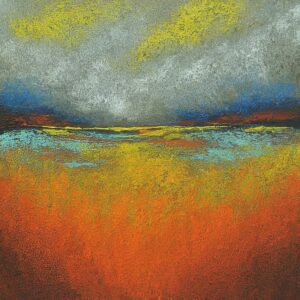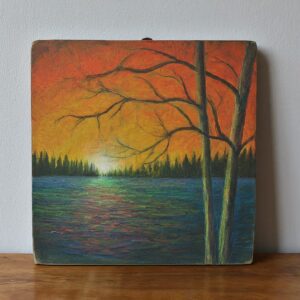As an oil pastel artist, selecting the right surface is crucial for the success of your artwork. The surface you choose not only affects the texture and finish of your piece but also determines how well the oil pastels adhere and blend. Among the myriad of options available, understanding the characteristics of different surfaces can help you make an informed decision and enhance the overall quality of your oil pastel paintings.
One of the fundamental aspects to consider when choosing a surface for oil pastel paintings is its texture. Unlike traditional painting mediums, oil pastels require a certain amount of tooth or roughness on the surface to grip the pigment effectively. Surfaces with minimal tooth may cause the pastels to slide or smear, resulting in a lack of control and definition in your artwork.
Here are some common surfaces used for oil pastel paintings, each offering unique qualities and challenges:
- Textured Paper: Textured papers specifically designed for pastel work are a popular choice among oil pastel artists. These papers feature a coarse or grainy surface that provides ample tooth for the pastels to adhere to. Papers with a heavier weight are preferable as they can withstand the pressure and blending techniques associated with oil pastels. Some artists opt for sanded pastel papers for an even more pronounced texture, allowing for intricate layering and blending.

2. Canvas: Canvas provides a sturdy and versatile surface for oil pastel paintings. While traditional stretched canvas may lack the necessary tooth, you can enhance its texture by applying gesso or a textured ground before starting your artwork. Alternatively, canvas boards with a pre-textured surface designed for pastels are available in art supply stores. The absorbency of canvas allows for vibrant colors and expressive blending techniques, although it may require more layers to achieve full coverage compared to paper.

3. Mixed Media and Specialty Surfaces: Experimenting with unconventional surfaces can lead to exciting and unexpected results in oil pastel paintings. Some artists enjoy working on surfaces such as wood panels, textured fabrics, or even prepared surfaces like pastel board, which offer unique textures and characteristics. Mixed media surfaces allow for the incorporation of various materials alongside oil pastels, expanding the creative possibilities and adding depth to your artwork.

4. Toned Papers: Toned papers, such as pastel paper in shades of gray, tan, or other colors, can add visual interest and depth to your oil pastel paintings. The mid-tone background provides a neutral base for highlighting and shadowing, allowing for greater control over the overall tonal range of your artwork. Experimenting with different toned papers can significantly impact the mood and atmosphere of your paintings.

When selecting a surface for your oil pastel paintings, it’s essential to consider factors such as texture, absorbency, and color. Additionally, testing different surfaces with your preferred brand of oil pastels can help you determine which combination yields the best results for your artistic style and preferences.
Ultimately, the surface you choose should complement your artistic vision and enhance the expressive qualities of your oil pastel paintings. By understanding the characteristics of different surfaces and experimenting with various techniques, you can unlock the full potential of this versatile and vibrant medium. Whether you prefer the toothy texture of specialized pastel paper or the versatility of canvas, selecting the right surface is an essential step towards creating captivating and dynamic oil pastel artworks.
PS: If you want to FASTTRACK your Oil Pastel Learning, following is the link to some of the popular Oil Pastel courses
https://courses.worldofpaintings.com/s/store/courses/Oil%20Pastel



